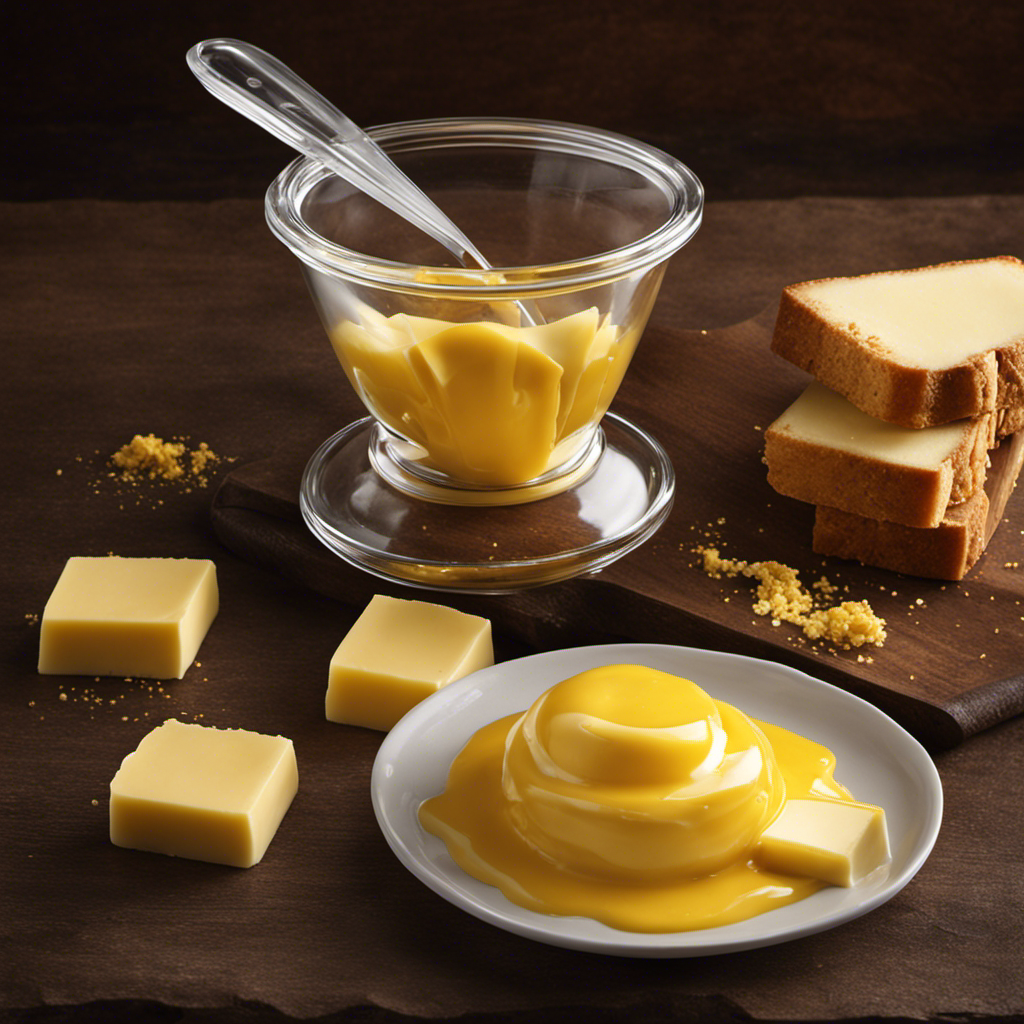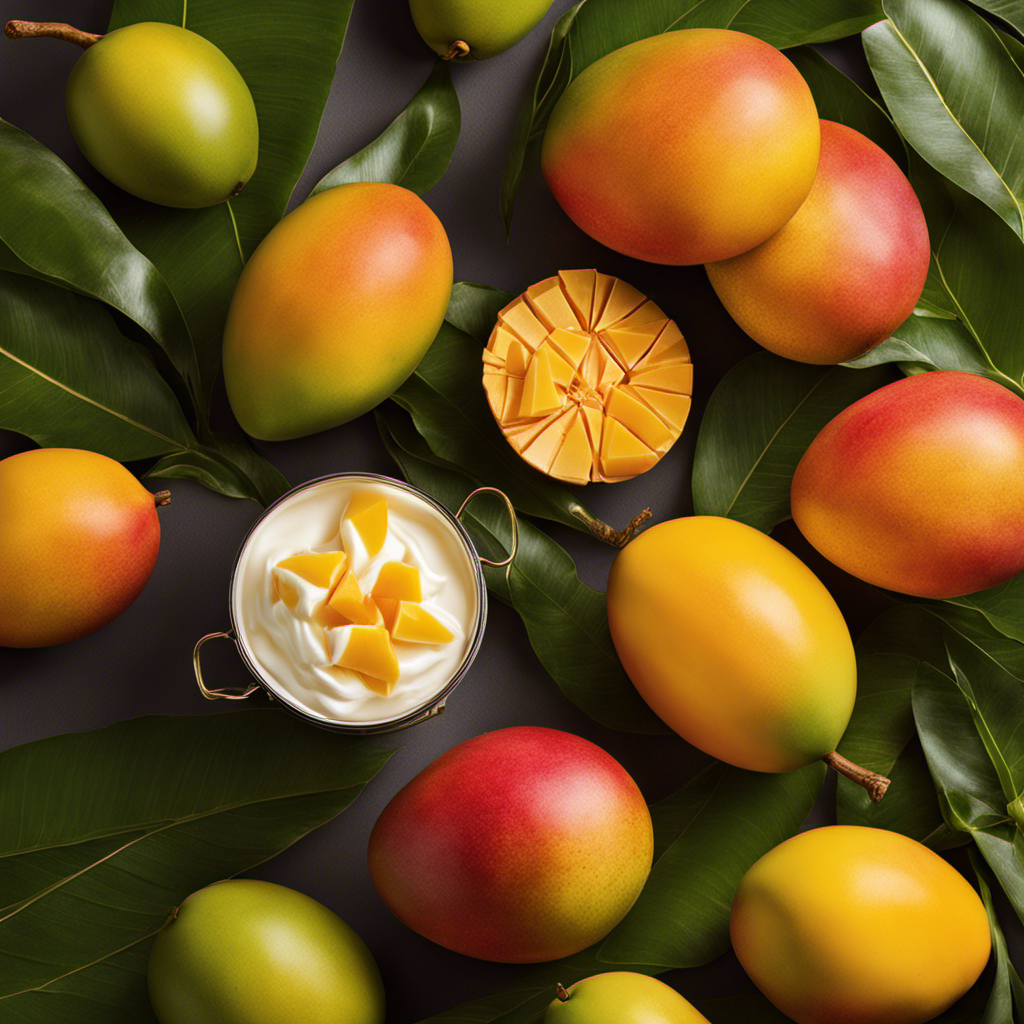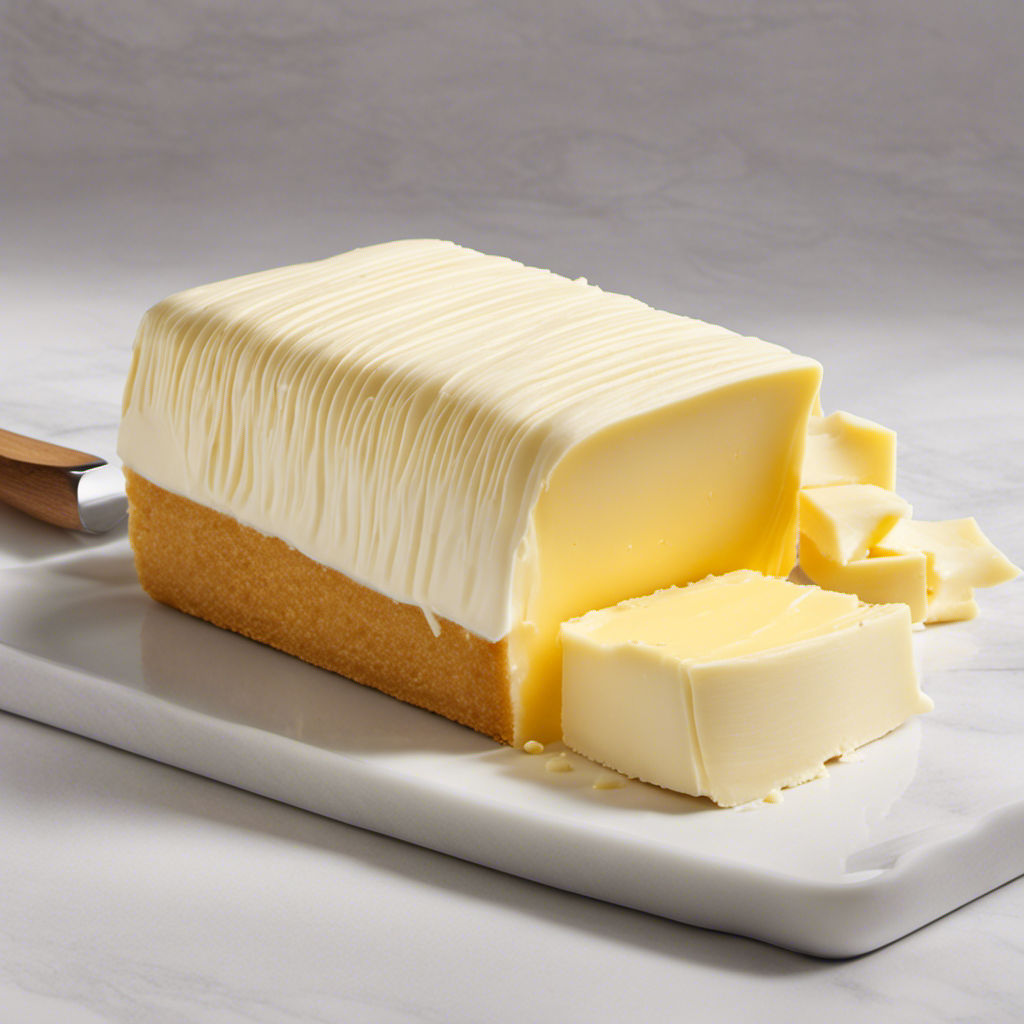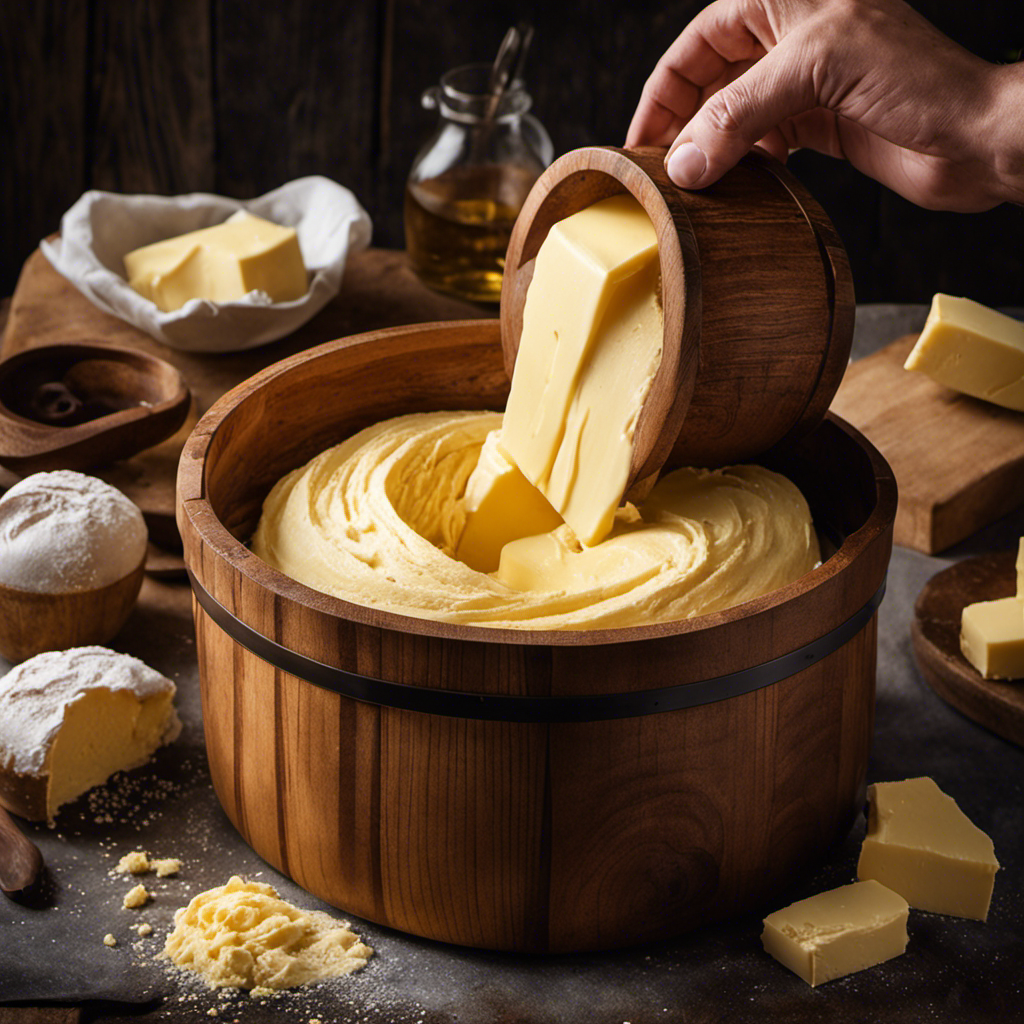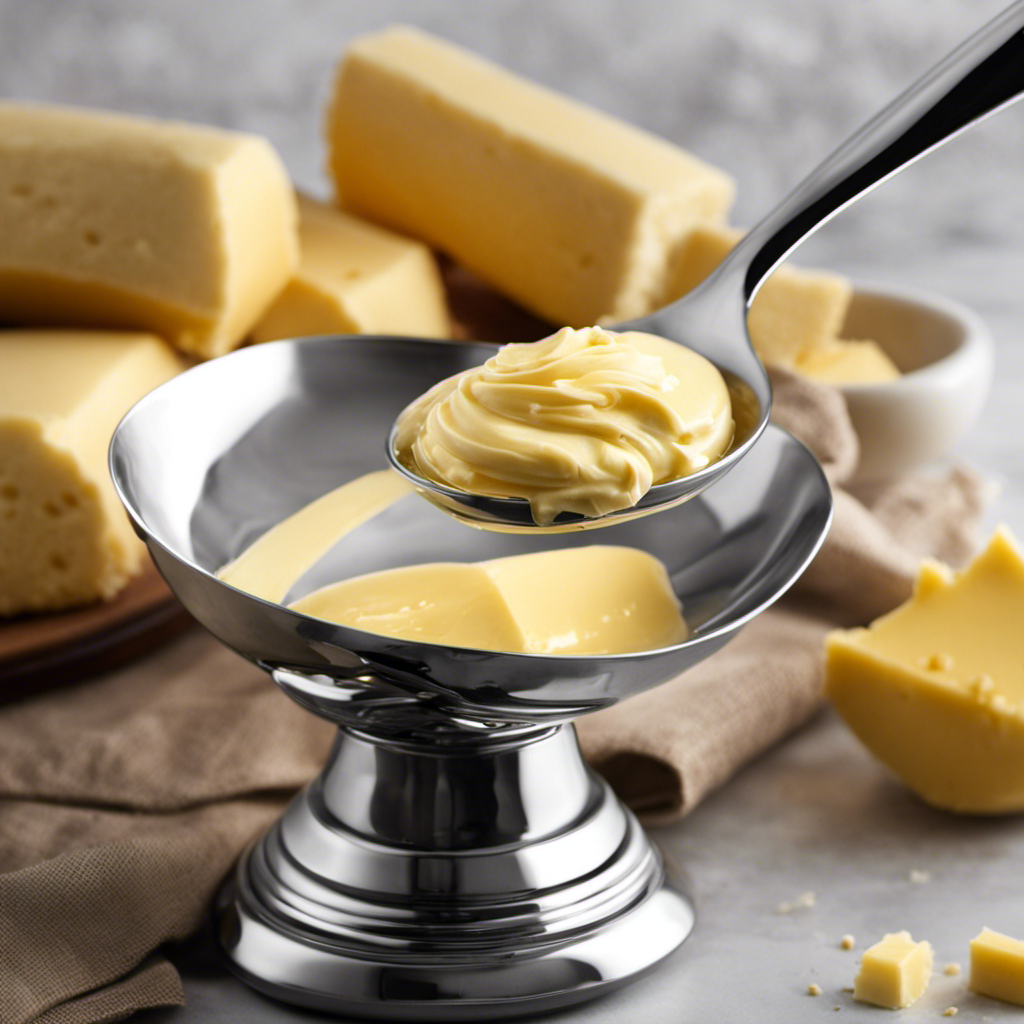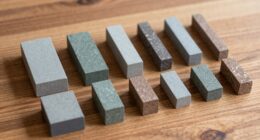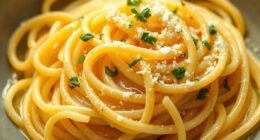As someone who loves baking, I frequently ponder: what is the equivalent of one cup of butter in sticks? This is a critical question that can significantly impact the outcome of a recipe, highlighting the importance of accuracy.
In this article, we will explore the conversion ratio between butter sticks and cups, providing you with a handy conversion table and valuable measurement tips. Whether you’re a beginner or a seasoned baker, understanding the butter-to-cup ratio is essential for achieving those perfect, mouthwatering results.
So let’s dive in and unravel the mystery together!
Key Takeaways
- One cup of butter equals two sticks or 16 tablespoons.
- Understanding the conversion ratio is essential for accurate recipe following.
- Converting sticks to cups can be done by dividing the number of sticks by 2.
- Substituting butter with alternatives can accommodate different dietary preferences or restrictions.
Understanding the Conversion Ratio
To understand the conversion ratio, you’ll need to know how many sticks of butter equal one cup. When it comes to converting butter measurements for cooking, especially in savory recipes, it is essential to have an accurate understanding of the conversion ratio.
One cup of butter is equal to two sticks or 16 tablespoons. This precise measurement ensures that your recipes turn out just right, providing the perfect balance of flavor and texture. Whether you are baking cookies or preparing a savory dish, knowing the proper conversion ratio is crucial for achieving the desired results.
Now that we have established the conversion ratio, let’s move on to the next section where we will discuss a butter stick to cup conversion table.
Butter Stick to Cup Conversion Table
When it comes to baking, accurate measurements are crucial. Understanding butter measurement equivalents and converting sticks to cups can help ensure precise results in your recipes.
In this discussion, we’ll explore an easy-to-use butter conversion table that provides a concise reference for converting between sticks and cups. This will make your baking experience more efficient and successful.
Butter Measurement Equivalents
You can easily convert butter measurements by knowing that one cup of butter is equivalent to 2 sticks. Understanding butter measurement equivalents is essential in cooking and baking. It allows you to accurately follow recipes and achieve desired results.
When measuring butter, it is important to note that butter sticks typically come in 1/2 cup or 1/4 pound sizes. One stick of butter is equivalent to 1/2 cup or 8 tablespoons. Therefore, if a recipe calls for 1 cup of butter, you will need 2 sticks. Similarly, if a recipe requires 1/2 cup of butter, you can use 1 stick.
These measurement tips and tricks are based on standard butter packaging and are widely accepted in the culinary world. By understanding butter measurement equivalents, you can confidently navigate through various recipes and create delicious dishes.
Converting Sticks to Cups
Converting sticks to cups can be done by understanding that 2 sticks of butter are equivalent to 1 cup. This conversion is useful when following a recipe that calls for butter in cups but you only have sticks of butter on hand.
To convert sticks to cups, follow these steps:
- Determine the number of sticks you have.
- Divide the number of sticks by 2 to find the equivalent number of cups.
For example, if you have 4 sticks of butter, you would divide 4 by 2, resulting in 2 cups of butter.
It’s important to note that this conversion only applies to butter and not other butter substitutes such as margarine or shortening. If you are using a butter substitute, consult a conversion chart to determine the appropriate measurement.
Easy Butter Conversions
The conversion from sticks to cups is a straightforward process that can be easily done by dividing the number of sticks by 2.
When it comes to butter, it is important to have accurate measurements in recipes to ensure the desired outcome. However, if you find yourself without measuring cups or need an alternative butter measurement, there are a few tips that can come in handy.
One common method is using tablespoons. There are 8 tablespoons in a stick of butter, and 16 tablespoons in a cup. So, if a recipe calls for 1 cup of butter, you can use 2 sticks or 16 tablespoons.
Another option is using a kitchen scale. A stick of butter weighs approximately 113 grams, so you can weigh out the desired amount in grams for precise measurements.
These butter conversion tips can make baking a breeze even without traditional measuring cups.
Measurement Tips and Tricks
A helpful tip for measuring ingredients is to use a butter knife to level off dry ingredients in a measuring cup. This ensures accuracy and consistency in your recipes.
When it comes to accurately measuring butter for baking, here are some tips to keep in mind:
- Soften the butter to room temperature before measuring to ensure an even and accurate measurement.
- Use a ruler or a kitchen scale to measure the desired amount of butter. This is especially important when a recipe calls for a specific weight measurement.
Creative uses for leftover butter:
- Spread it on toast or bread for a delicious and creamy addition.
- Use it to sauté vegetables or add flavor to your favorite dishes.
Converting Butter Measurements for Baking
To accurately measure butter for baking, you’ll want to keep in mind some helpful tips and tricks. Understanding butter measurements is crucial for achieving the desired results in your baked goods.
When a recipe calls for a certain amount of butter, it is important to accurately convert it into the right form. One stick of butter typically equals half a cup or 8 tablespoons. So, if a recipe calls for 1 cup of butter, you will need 2 sticks or 16 tablespoons. It is also helpful to know that butter is often sold in 4-ounce sticks, with each stick marked with tablespoon measurements on the wrapper.
By following these tips for accurate butter conversions, you can ensure that your baking turns out just right.
Now, let’s explore some common substitutions for butter sticks.
Common Substitutions for Butter Sticks
When substituting butter in recipes, you can use ingredients like applesauce, yogurt, or avocado. These alternatives provide a healthier option while still maintaining the desired texture and taste.
Here are some common substitutions for butter in cooking:
-
Applesauce:
-
Unsweetened applesauce works well in baked goods like muffins, cakes, and cookies.
-
Use an equal amount of applesauce for the butter called for in the recipe.
-
Yogurt:
-
Plain, unsweetened yogurt can be used as a butter substitute in various recipes.
-
Use an equal amount of yogurt for the butter called for in the recipe.
-
Avocado:
-
Mashed avocado is a great substitute for butter in recipes like brownies or chocolate desserts.
-
Use half the amount of avocado for the butter called for in the recipe.
These alternative options for butter in recipes provide a healthier twist and can be easily incorporated into your cooking without compromising on taste or texture.
Converting Butter Measurements in Recipes
When it comes to baking, accurate measurements are crucial for achieving the desired results. In this discussion, I will be focusing on butter measurement conversions, which are often necessary when following recipes from different sources.
Additionally, I will also explore the topic of substituting butter in recipes and provide some common equivalents for butter that can come in handy in the kitchen.
Butter Measurement Conversions
You can easily convert butter measurements by knowing that one cup is equal to 2 sticks. Understanding butter ratios and converting butter for cooking is essential for accurate recipe preparation. Here are a few points to keep in mind regarding butter measurement conversions:
-
When a recipe calls for tablespoons of butter, you can easily convert it to sticks by dividing the number of tablespoons by 8. For example, 8 tablespoons of butter is equivalent to 1 stick.
-
If you need to convert a recipe that uses grams or ounces of butter, it’s important to know that 1 stick of butter weighs approximately 113 grams or 4 ounces.
Substituting Butter in Recipes
Understanding butter measurement conversions is essential for accurately substituting butter in recipes to accommodate different dietary preferences or restrictions.
When it comes to baking, butter plays a crucial role in providing moisture, flavor, and texture to the final product. However, for those who follow a vegan or lactose-free diet, or simply prefer a healthier alternative, there are various butter alternatives available.
These alternatives include coconut oil, vegetable oil, applesauce, and even avocado. Each substitute has its own unique properties, which can affect the taste and texture of the baked goods. It is important to carefully consider the recipe and the desired outcome before choosing a butter substitute.
By understanding the different butter alternatives and their properties, you can confidently make substitutions in your recipes to suit your dietary needs or preferences.
Now let’s explore some common butter equivalents.
Common Butter Equivalents
Coconut oil, vegetable oil, applesauce, and even avocado can be used as substitutes for butter in recipes. When substituting butter, it’s important to know the equivalent measurements to ensure the desired texture and taste of the final dish.
Here are some common butter quantity conversions:
- 1 stick of butter = 1/2 cup = 8 tablespoons = 113 grams
- 1 cup of butter = 2 sticks = 16 tablespoons = 226 grams
Converting butter measurements can be helpful when adapting recipes or accommodating dietary preferences. By using these conversions, you can easily modify the amount of butter without compromising the overall quality of your dish.
Remember to consider the differences in moisture and fat content when substituting butter with other ingredients. Experimenting with different substitutes can open up new possibilities in your cooking while still maintaining the desired flavors and textures.
Frequently Asked Questions
Can I Use Margarine Instead of Butter in Recipes That Call for Sticks of Butter?
Yes, you can use margarine instead of butter in recipes that call for sticks of butter. However, keep in mind that the taste and texture may be slightly different. Also, note the difference between unsalted and salted butter.
How Much Is Half a Stick of Butter in Grams?
Converting butter measurements can be a bit tricky. When it comes to grams, half a stick of butter is around 56 grams. It’s important to know these conversions for accurate recipe measurements.
Can I Substitute Oil for Butter in Recipes That Call for Cups of Butter?
Yes, you can substitute oil for butter in recipes that call for cups of butter. However, keep in mind that the texture and flavor may change. Another option is using applesauce instead of butter.
How Many Tablespoons Are There in One Stick of Butter?
There are 8 tablespoons in one stick of butter. To convert butter measurements from sticks to tablespoons, simply multiply the number of sticks by 8.
Are There Any Other Common Substitutions for Butter in Baking?
In vegan baking, there are alternative fats that can be used instead of butter. These substitutes include coconut oil, avocado, and nut butters. They can provide similar texture and flavor to your baked goods.
Conclusion
To conclude, it’s important to understand the conversion ratio when measuring butter in cups versus sticks. The Butter Stick to Cup Conversion Table provides a handy reference for easy conversions.
Additionally, using measurement tips and tricks can ensure accurate results in baking.
In some cases, substitutions for butter sticks may be necessary. However, it’s important to consider the impact on the final outcome of the recipe.
For example, in a hypothetical case study, substituting margarine for butter sticks in a cookie recipe resulted in a less rich and flavorful cookie.
